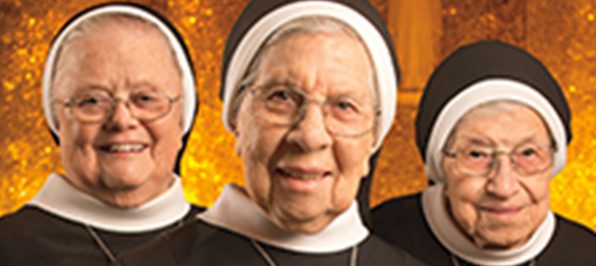Retirement Fund for Religious Benefits 33,000 Sisters, Brothers, Priests in Religious Orders

The annual Retirement Fund for Religious collection will be held Dec. 12-13 in the Diocese of St. Petersburg. Now in its 28th year, the appeal is coordinated by the National Religious Retirement Office (NRRO) and offers support for senior Catholic sisters, brothers and religious order priests whose communities lack sufficient retirement funding. Some 33,000 women and men religious past age 70 benefit.
The Diocese of St. Petersburg contributed $215,857.59 to the last collection. In 2015, the Sisters of St. Clare received financial assistance made possible by the Retirement Fund for Religious. Women and men religious who serve or have served in the diocese but whose communities are based elsewhere may also benefit from the annual collection.
The 2014 appeal raised $28.3 million, and the NRRO distributed more than $25 million in monetary support to 395 religious communities. Throughout the year, additional funding is allocated for communities with the greatest needs and for retirement planning and educational resources. Ninety-three cents of every dollar directly aids elderly religious; the remainder is used for administration and promotion of the appeal.
“We are overwhelmed by the ongoing generosity shown this appeal,” said Precious Blood Sister Janice Bader, the NRRO’s executive director. “Since the fund was launched in 1988, Catholics have donated $755 million to assist religious communities in caring for their elder members.”
The U.S. bishops initiated the collection to address the significant lack of retirement funding among U.S. religious communities. Proceeds are distributed to eligible communities to help underwrite retirement and health-care expenses.
While the response to the collection is unprecedented, so is the need. The total cost of care for senior women and men religious has exceeded $1 billion for each of the last six years. At the same time, the number of religious needing care is on the rise. In 2014, 66 percent of the religious communities providing data to the NRRO had a median age of 70 or older. Accompanying the higher median age is a decrease in the number of religious able to serve in compensated ministry, which further reduces the income available for eldercare.
Hundreds of religious communities also lack sufficient retirement savings, due in part to historically low compensation. “Most senior religious worked for years for small stipends and did not receive retirement benefits,” said Sister Bader. Religious communities are financially autonomous and thus responsible for the support and care of all members. Annual distributions from the Retirement Fund for Religious provide supplemental assistance to help meet such day-to-day needs as prescription medications and nursing care.
In addition to providing financial assistance, the NRRO offers education and resources that help religious communities stretch retirement dollars and plan for future needs. Strategic partnerships with various organizations further these efforts. For example, support from the Conrad N. Hilton Foundation is underwriting the creation of programming and materials that promote the effective management and/or divestment of outdated congregational properties.
“We remain committed to ensuring the broadest and most beneficial use of donations to the Retirement Fund for Religious,” said Sister Bader.
Visit www.retiredreligious.org to learn more.

